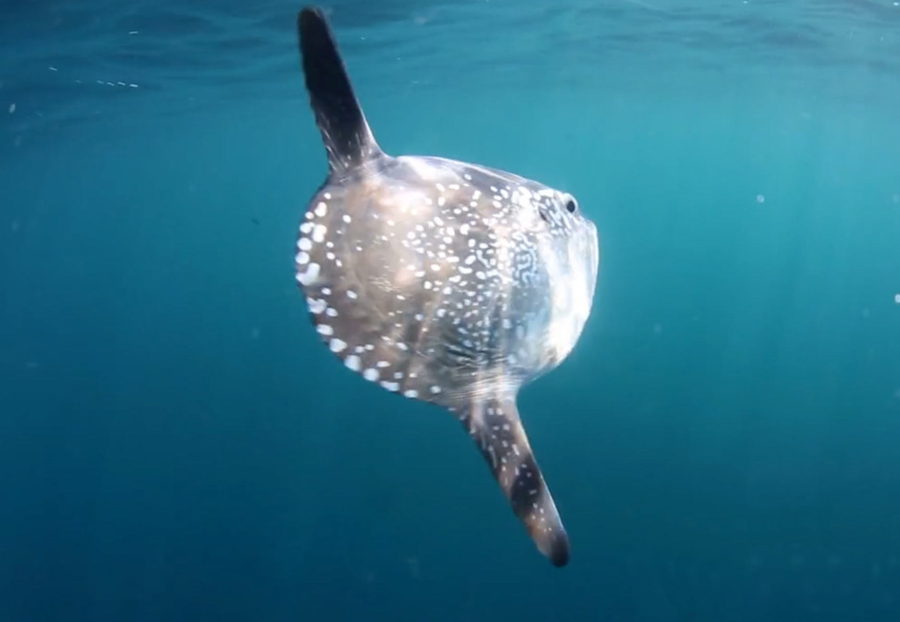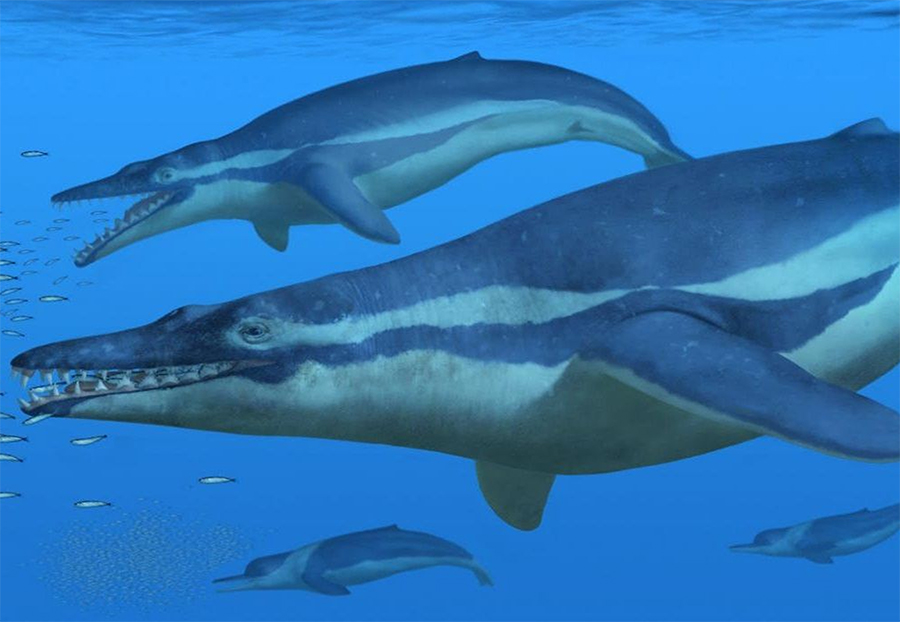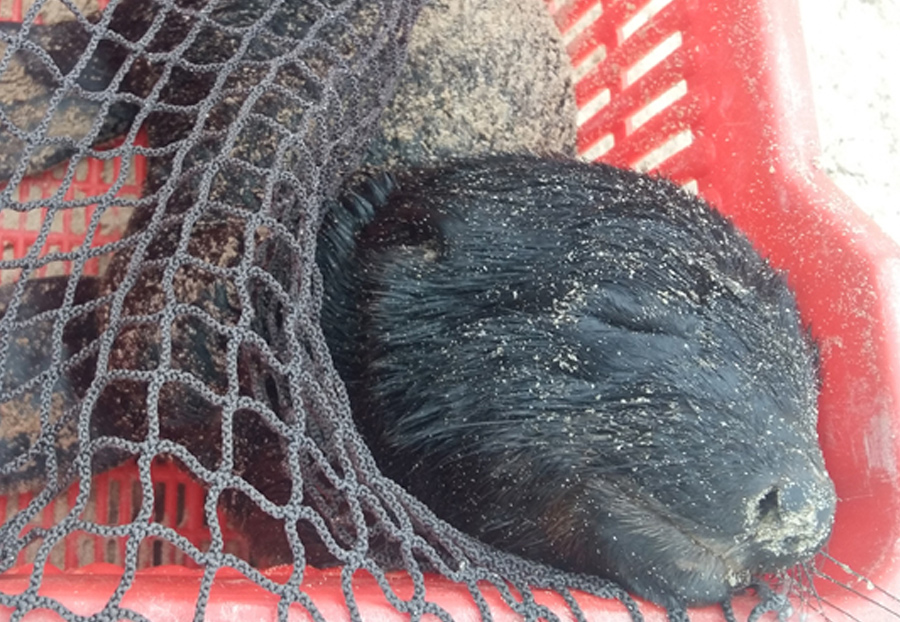A SWIMMING HEAD, THE SUNFISH
The Sunfish
The largest bony fish in the world is the ocean sunfish Mola mola. These behemoths can grow up to a whopping 2.3 tons and 3.3 m! They are a very peculiar fish, and despite the size that this species can grow to, sunfish give the appearance of being half a fish – their tail does not develop but instead folds back on itself creating a scalloped, broad, stiff lobe called the clavus (which is Latin for rudder). As the vertebral column is severely reduced, besides not having a tail, sunfish do not have ribs either. With a laterally flattened body and tall dorsal and ventral fins, this fish looks entirely strange! This is reflected by their names: in German Schwimmender Kopf, or “swimming head”; and in Polish samogłów, or “head alone”. Being known as the sunfish in English refers to this species tendency to bask very near the surface of the water, while it is also known as the moonfish which refers to its rounded shape. Its Latin name, Mola mola means millstone, which the fish resembles with its grey colour, rough texture, and rounded body. Their diet is somewhat unclear, but they have been reported as being omnivores, consuming algae, crustaceans, molluscs, jellyfish, and fish. Historically, sunfish were thought to be unable to swim, and instead passively drifted through the ocean.
Recent research showed that Mola mola equipped with acoustic tags travelled great distances and were active swimmers. They occupy a broad range of depths and will move extensively through the water column. During the day sunfish will make frequent dives deep below the thermocline, with periods of time spent close to the surface basking. This is a manner of behavioral thermoregulation – after time spent in the deep cold water they need to re-warm at the surface. At night they tend to stay above the thermocline with shallower dives. Sunfish have a subtropical distribution, and often they can be seen on the surface of the ocean, which is where we have seen them on occasion from the boats off the point of Robberg Peninsula – how awesome to see these odd fish! Unfortunately, they are classified as Vulnerable according to the IUCN, with large numbers being caught as bycatch, although there is some targeted fishing in Japan and Taiwan.
Written by: Minke Tolsma
For further reading:
- Liu, J., Zapfe, G., Shao, K.-T., Leis, J.L., Matsuura, K., Hardy, G., Liu, M., Robertson, R. & Tyler, J. 2016. Mola mola. The IUCN Red List of Threatened Species 2015. Accessed: 2017-12-03. URL: http://www.iucnredlist.org/details/190422/0.
- Pope, E., Hays, G., Thys, T., Doyle, T., Sims, D., Queiroz, N., Hobson, V., Kubicek, L. & Houghton, J. 2010. The biology and ecology of the ocean sunfish Mola mola: A review of current knowledge and future research perspectives. Reviews in Fish Biology and Fisheries 20: 471-487.




